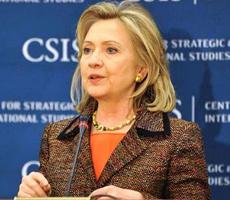Why the media spin on Nov. 6 is wrong
By Wes Pruden
PrudenPolitics.com
A
few more “really bad weeks” like last week for Mitt
Romney and somebody will have to stick a fork in
President Obama. He’ll be done.
Despite the hammering Mr. Romney took from the
president and his media claque, he moved from 5 or 6
points behind in the Gallup Poll to a dead-even tie
at the end of the week. Rasmussen, whose different
methodology has made it consistently the most
reliable of the polls, called the race dead-even as
well.
The president still leads in several of the swing
states, so called, but in some of those his lead is
shrinking. You wouldn’t know this from the noise in
the mainstream media, so called, and even from some
of the conservative pundits who, though easily
intimidated by the noise from the back of the press
bus, usually constitute the only counterweight to
the prevailing liberal media mob.
Nevertheless, a different version of the news is
seeping through the media consciousness. Mr. Romney
took hits for his mild observation that the
president’s reaction to the killing of the
ambassador and three other Americans in Libya was
wrong-headed, but at the end of Mr. Romney’s “really
bad week” the White House insistence that the deadly
riots in Libya had nothing to do with terrorism fell
apart.
The president was left with scrambled sheep’s eyes
(if not egg) all over his face. Secretary of State
Hillary Clinton’s press aide became so frustrated
answering questions about the administration’s
crumbling story Monday that he called a reporter an
[rectal aperature] and suggested that he perform an
impossible sexual act on himself. Understandable,
perhaps, but it reflects what happens even to
presidents and their liege men when tall tales fall
apart.
But the media spin, abetted by a few of the Chicken
Little conservatives, continues that the sky has
fallen on Mr. Romney and the race is over. These
pundits cite some polls, ignore others, and are too
busy clucking agreement with the spin to look
carefully at how the pollsters measure public
opinion. Joining the Hullabaloo is more fun than
lonely hard work.
A
little of such work reveals how most of the polls
are skewed. No reputable pollster deliberately cooks
the numbers; he would quickly put himself out of
business if he did. But he can work with out-of-date
assumptions and stale numbers in getting to those
numbers.
To
take a poll, a pollster first builds a model, a pool
of voters to reflect the voting population. He uses
the results of the previous election, or elections,
to identify and select the voters to put in his
demographic pool. He has to be careful in adjusting
the percentages. Telephone surveys, if he is not
careful, for example, would have too few blacks,
Hispanics and young voters in the sample because
many voters in those categories have no landline
phones – calling cell phones skews the result in
other ways – or because those voters are often not
at home or don’t speak English and are difficult (or
impossible) to interview. The elderly are easily
overstated because they’re usually at home and have
time to talk. So the pollster “weights” the numbers
by arbitrarily adding or subtracting voters from
certain categories.
“Ordinarily,” says Dick Morris, who invented Bill
Clinton with his uncannily accurate measurements of
voter sentiment, first in Arkansas and then for the
rest of the nation, “this task is not difficult.
Over the years, black, Latino, young and the elderly
proportion of the electorate has been fairly
constant from election to election, except for a
gradual increase in the Hispanic vote. You just need
to look back at the [previous] election to weight
your polling numbers for this one.”
Pitfalls abound. Black voters, based on previous
elections, typically cast 11 percent of the vote in
presidential elections. Four years ago they made up
14 percent of the vote. Young voters doubled their
vote from 2004 to 2008. Yet nearly all pollsters are
basing their models for this year on the 2008 vote.
Nearly all of them, however, find a large
“enthusiasm gap” between Obama voters, discouraged
by high unemployment and disappointed by his
performance, and the Romney voters. Many Romney
voters are lukewarm about their candidate but
red-hot about the prospect of defeating Mr. Obama.

Secretary of State Hillary Clinton
A
new website, unskewedpolls.com, attempts to redefine
the data used by pollsters against actual voting
results from both 2004 and 2008. Once crunched,
their numbers show a Romney lead between 5 and 11
points. These numbers might not be “unskewed” so
much as “differently skewed.” But they might be more
accurate – or at least a warning that despite
Chicken Little’s hysteria, the fat lady has not
sung.
Wesley Pruden is editor emeritus of The Washington
Times.

